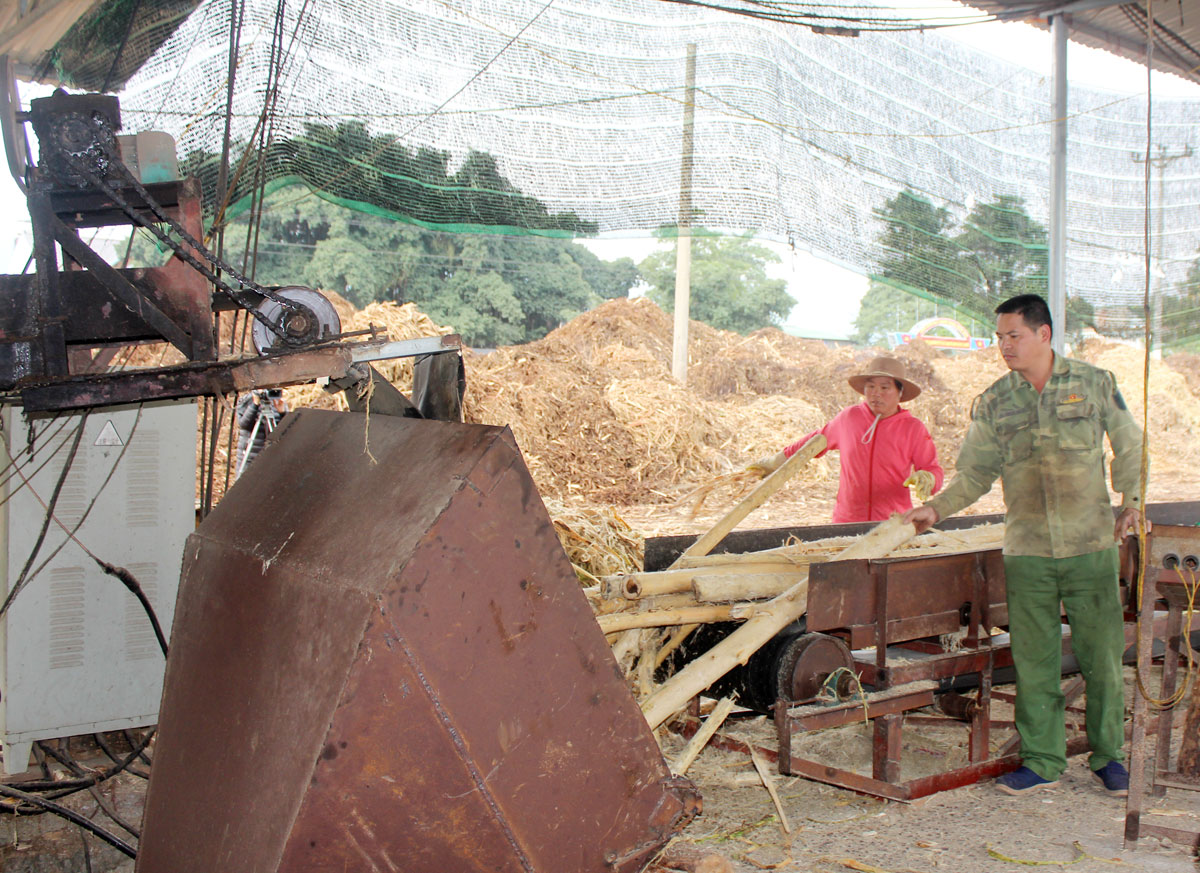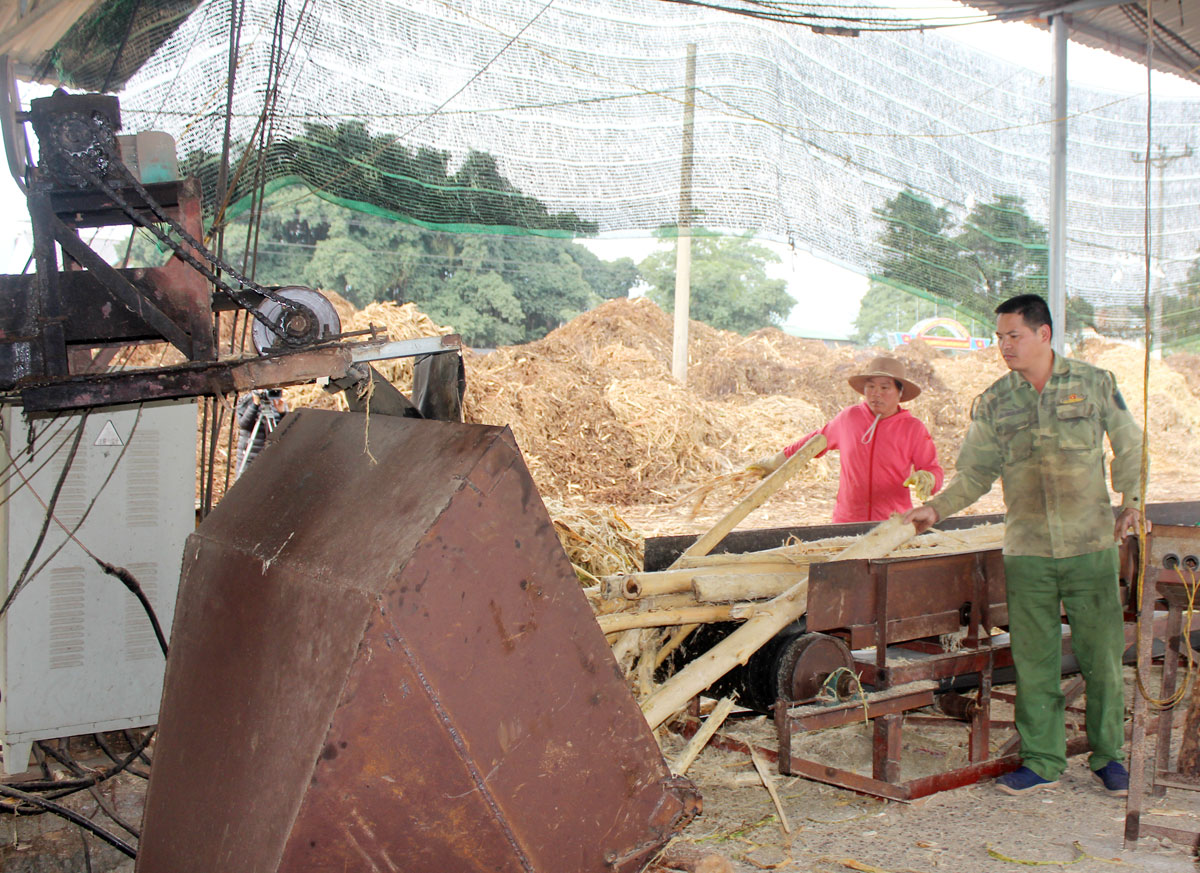(HBO) – Hoa Binh province holds strength in exports, especially key farm produce. In recent years, the provincial Party Committee and People’s Committee have issued a number of documents, policies and mechanisms to improve competitiveness of exports. During 2016-2020, the average export growth was stable. The structure of exports switched to high-tech manufacturing and processing with expanded markets, contributing to local economic development.
In order to tap local potential to boost
exports, the standing board of the provincial Party Committee issued Conclusion
No.12-KL/TU on the improvement of competitiveness for Hoa Binh’s exports for
the 2016-2020 period with orientations to 2030. On such basis, the provincial
People’s Committee issued decisions approving a scheme on improving competitiveness
of Hoa Binh’s exports for 2016-2020 with orientations to 2030 and another on
developing key farm produce in value chain to ensure food safety for 2018-2020
with orientations to 2025, a scheme on local science-technology development for
2016-2020 with orientations to 2030. The provincial People’s Committee also
decided to issue a policy to assist firms in sci-tech development, approve the
2018-2020 intellectual property development programme along with economic
development plans.
Over the past years, together with the planning
of technical infrastructure in industrial parks to draw investment, the
provincial Party Committee and People’s Committee directed raising exporters’
awareness of goods standards, intellectual property protection, and trademark
marketing for farm produce of strength.
Director of the provincial Department of
Industry and Trade Pham Tien Dung said over the past five years, the number of
local firms majoring in production and export-import has increased in terms of
volume and scale. The province is now home to 49 companies involved in
export-import, up 40 percent from 2015. With its complete infrastructure, the
Luong Son IP has drawn a number of exporters and foreign-invested enterprises
operating in electronics, steel and apparel. Foreign firms’ export accounts for
the lion's share of the province’s total shipments. The locality is seeing huge
opportunities to boost exports when Vietnam has joined new-generation free
trade agreements, especially the European Union – Vietnam Free Trade Agreement
(EVFTA) that took effect on August 1. The trade war and COVID-19 pandemic have
also hit the country’s economy, including Hoa Binh’s, particularly in industry
and export. But with drastic directions of the Government, ministries and agencies
as well as relief packages, the local exports-imports grew stably again.
Hong Gia Bao JSC in Dong Lai commune, Tan Lac
district working in wood processing, including producing wood chips for export,
has generated jobs to 100 workers with a monthly income of 6-8 million VND per
person. Its manager Nguyen Tien Dung said due to COVID-19 pandemic last year,
the company’s turnover slumped. Therefore, the company actively sought
consumers and suppliers of input materials. This year, it will expand production
and trade, and build a plywood factory to better meet demand.
In addition to wood production and processing,
the company also engages in a joint venture with a Korean enterprise to build a
knitting factory in Thanh Hoi commune to diversify and further improve the
quality of exports. The first phase of construction will be from the first to
the third quarter of this year. Once completed, it is expected to install 700
knitting machines and attract about 500 workers.
The province has also strengthened trade
promotion activities at home, and helped firms expand consumption. At the same
time, it also invited local firms to supply-demand connectivity conferences,
trade expos in cities and provinces to seek markets. The locality also launched
59 food production and consumption chains, paid attention to evaluating market
potential and partners, and worked with ministries, agencies and localities to
popularise its strengths.
Additionally, sci-tech application in production
and processing is considered one of the factors to enhance productivity and
product quality, thereby improving competitiveness of exports. The province has
had one national project and seven projects under a programme to support
technological application and transfer for the sake of socio-economic
development in rural and mountainous areas.
Special attention was also paid to intellectual
property ownership, geographical indication and trademarks. The province
successfully registered intellectual property rights for 15 collective
trademarks and seven brands of farm produce and traditional specialties./.



 Hong Gia Bao JSC in Dong Lai commune, Tan Lac
district produces wood chips for export, helping create jobs and provide stable
income for local workers.
Hong Gia Bao JSC in Dong Lai commune, Tan Lac
district produces wood chips for export, helping create jobs and provide stable
income for local workers.